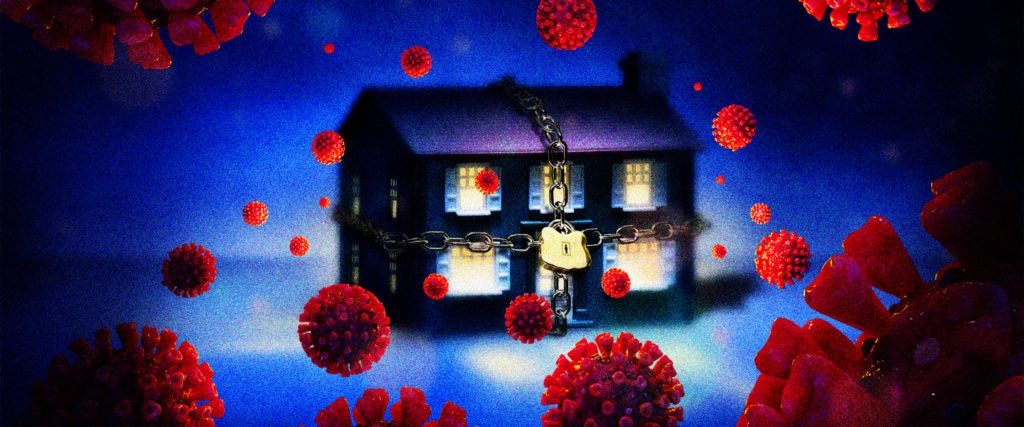I hope you’ve mentally prepared yourself for several more months of staying indoors. With the extra unemployment benefits ending and kids being sent back to physical schools in parts of the country, odds are, rates of the coronavirus are going to increase. And when rates increase, we’ll likely be looking at another full-fledged quarantine. But it’s possible that a fall/winter quarantine will have one benefit, besides the whole “not killing your older loved ones” thing: You might get to avoid your annual cold and flu.
In the U.S., flu season usually kicks into gear in December and ends around March. Sometimes, though, it begins as early as October and ends as late as May. You know what else happens between October and May? Depending on where you live, it gets cold as shit. The sun goes down earlier. You spend your days sitting on a couch not doing anything and not going outside. It’s not a coincidence that cold and flu season aligns with this time.
The term “cold and flu” season is kind of misleading. Yes, you might be more likely to get sick during the winter, but it’s not the cooler temperatures that make us feel ill. Instead, it’s an indirect side effect: It’s cold out, so you tend to stay indoors, and when you’re indoors, viruses can spread more easily. Some speculate it also has something to do with receiving less vitamin D from the sun, which may compromise our immune systems. Regardless, it all hinges on being around other people. The only way to catch a cold, flu or COVID-19 is from another person’s germs. And so, if you keep up with social distancing this fall and winter, especially if formal quarantine measures are put back in place, you’re going to be far less likely to get sick with the usual viruses.
But as with coronavirus, avoiding the cold and flu is a household endeavor. If your children, spouse or roommates end up back at work or school, you’re essentially going to be exposed to whatever they’re exposed to. Hopefully, though, our current mask-wearing practices, regular handwashing and prolific hand-sanitizer usage will reduce the odds of them getting sick with anything, too. Cold and flu are thought to spread the same way as coronavirus, via respiratory particles. If we all collectively avoid each other’s respiratory particles, then we’ll all collectively be less likely to catch the things that come with them.
Even still, it’ll be wise to get a flu vaccine when it becomes appropriate to do so. Currently, the CDC website explains, “How and where people get a flu vaccine may need to change due to the COVID-19 pandemic. CDC is working with health-care providers and state and local health departments to develop contingency plans on how to vaccinate people against flu without increasing their risk of exposure to respiratory germs, like the virus that causes COVID-19.”
The website also states that it’s entirely possible to have both the flu and COVID-19 at the same time. For that reason, you might as well just cross it off your list of potential problems you’ll have to deal with and get the flu shot when you can. The flu can definitely still kill people, too.
Hopefully, though, you and your loved ones will have the opportunity to stay safe at home this winter and avoid other people’s germs. We’ve still got a lot to figure out here, like how the holidays are going to go and whether people will actually socially distance indoors, but maybe this year you can skip purchasing the DayQuil.
Unless, of course, we miraculously discover a coronavirus vaccine. If that happens, I’m sure you’ll be happy to need your DayQuil, after all.

